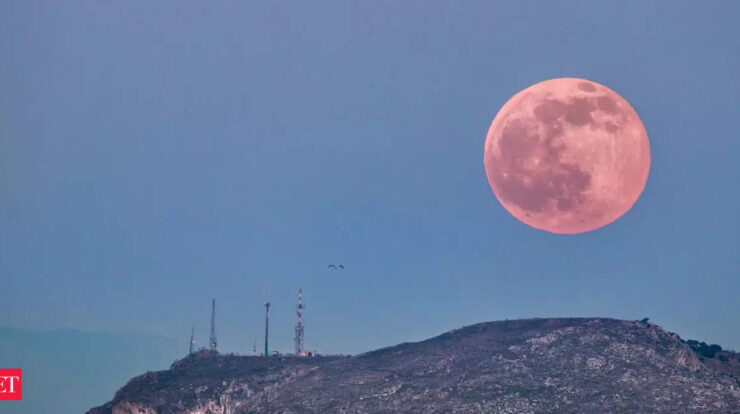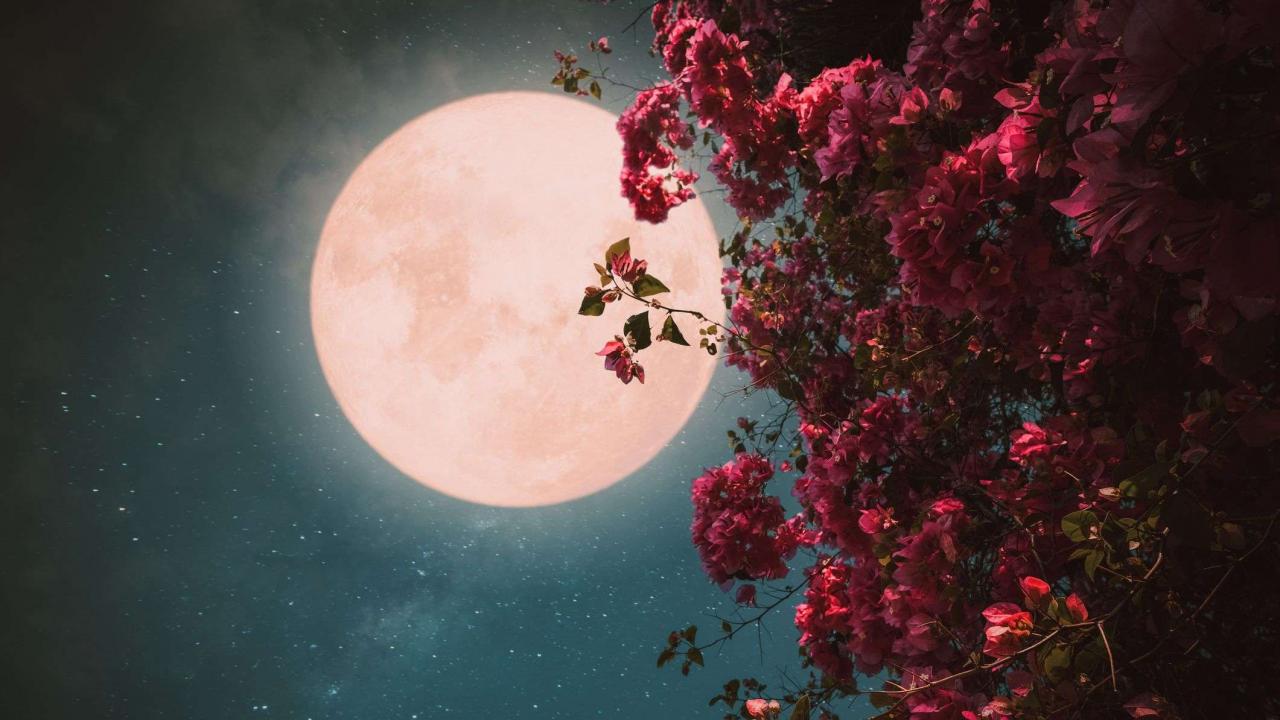
Prepare to be mesmerized as the Pink Moon 2024 graces the night sky, an astronomical spectacle that promises to captivate and inspire. This celestial phenomenon, steeped in cultural significance and scientific intrigue, will unfold in all its glory, leaving an indelible mark on our collective consciousness.
The Pink Moon, despite its ethereal name, derives its moniker not from its hue but from the delicate pink blossoms of the wild ground phlox, a flower that adorns meadows and woodlands during this time of year. As the moon rises, casting a soft, ethereal glow upon the landscape, it heralds the arrival of spring and the renewal of life.
Pink Moon 2024: Celestial Event and Cultural Significance

The Pink Moon, an astronomical phenomenon, occurs annually in April. Its captivating name originates from the delicate pink hue that often adorns the sky during its appearance. In 2024, the Pink Moon will grace the skies on April 19th.The Pink Moon is the first full moon following the spring equinox, marking a pivotal moment in the lunar cycle.
The lunar cycle comprises four distinct phases: new moon, first quarter, full moon, and third quarter. The full moon phase occurs when the entire face of the moon is illuminated by sunlight, creating a brilliant spectacle in the night sky.
Cultural and Historical Context
Throughout history, the Pink Moon has held cultural and symbolic significance in various societies. In Native American cultures, it was associated with the blooming of wildflowers and the beginning of the growing season. The Cherokee tribe referred to it as the “Moon of Flowers,” while the Cree called it the “Strawberry Moon.”In
European folklore, the Pink Moon was believed to possess magical properties and was often associated with love and fertility. It was said that if one slept under the Pink Moon’s glow, they would find their true love.
Observational Details
In 2024, the Pink Moon will reach its peak illumination on April 19th at 10:34 pm EDT. Observers in the Northern Hemisphere will have the best view of the moon as it rises in the east and ascends to its highest point in the sky.
| Date | Time | Viewing Recommendation |
|---|---|---|
| April 19th, 2024 | 10:34 pm EDT | Find an open area with a clear view of the eastern horizon. |
Photography and Astrophotography
Capturing stunning photographs of the Pink Moon requires careful planning and the right equipment. A tripod is essential to ensure stability, while a telephoto lens will help you zoom in on the moon’s surface. Long exposure settings allow you to capture the moon’s ethereal glow and the surrounding stars.For
astrophotographers, specialized equipment like equatorial mounts and light pollution filters can enhance the quality of your images. These tools help compensate for the Earth’s rotation and reduce the impact of light pollution, resulting in sharper and more vibrant photographs.
Related Phenomena, Pink moon 2024
During the 2024 Pink Moon, other celestial events may coincide, adding to the night’s astronomical spectacle. The Lyrid meteor shower, known for its bright and fast-moving meteors, will peak on April 22nd, just a few days after the Pink Moon.
Additionally, the planet Mars will be visible near the moon, offering an opportunity to observe two celestial bodies simultaneously.
| Event | Date | Description |
|---|---|---|
| Pink Moon | April 19th, 2024 | Full moon in April, often associated with a pink hue. |
| Lyrid Meteor Shower | April 22nd, 2024 | Annual meteor shower known for its bright and fast-moving meteors. |
| Mars | April 19th, 2024 | Planet Mars will be visible near the Pink Moon. |
Impact on Wildlife
The Pink Moon’s bright illumination can influence the behavior of certain wildlife species. Nocturnal animals, such as owls and coyotes, may adjust their hunting patterns to take advantage of the increased visibility. Marine animals, like sea turtles, use the moon’s glow for navigation during nesting season.The
lunar cycle has been shown to affect the activity levels and reproductive cycles of various animals. During the full moon, some species may exhibit increased activity, while others may become more cautious or reclusive.
Ending Remarks

The Pink Moon 2024 will not only be a feast for the eyes but also a testament to the intricate workings of our universe. It is a celestial event that transcends time and culture, uniting us in awe and wonder.
Whether you choose to observe it with the naked eye, through the lens of a camera, or simply bask in its radiant glow, the Pink Moon promises an unforgettable experience.
Question Bank: Pink Moon 2024
When will the Pink Moon 2024 occur?
The Pink Moon 2024 will reach its peak illumination on April 19, 2024, at 11:56 PM EDT.
Why is it called the Pink Moon?
Despite its name, the Pink Moon does not actually appear pink. Its moniker is derived from the delicate pink blossoms of the wild ground phlox, a flower that blooms during this time of year.
Where can I observe the Pink Moon?
The Pink Moon will be visible to observers in all parts of the world, weather permitting. Find a location with a clear view of the eastern horizon.





